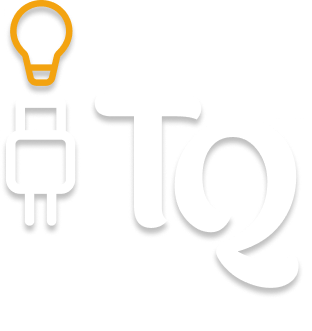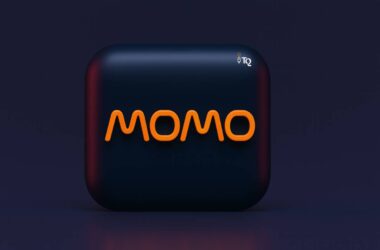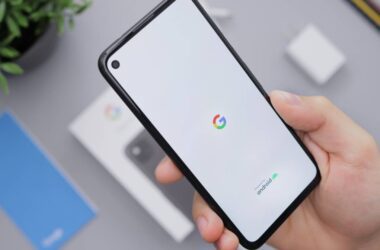Notes are no longer just for lectures or shopping lists; they’ve become a part of how we live, learn, and work. From capturing thoughts in a rush to drafting detailed project outlines, taking notes is how we process ideas, remember what matters, and stay organized in a fast-moving world.
Think about how often you need to jot something down: a meeting summary, a book quote, a daily to-do list, a spark of inspiration, or even a meal plan for the week. These small moments build-up, and having a digital place where everything is captured and easily found later can dramatically improve your day. For many, note-taking isn’t just helpful; it’s a key part of their productivity system.
That’s where having the right note-taking app comes in. The best apps don’t just store your notes; they help you write faster, organize better, and work smarter. Whether you’re typing with a keyboard, scribbling with a stylus, or dictating on the go, the right tool turns your iPhone or iPad into a powerful notebook tailored to your needs.
In this guide, we’re exploring the top 15 note taking apps on iPhone and iPad that stand out for their design, features, and flexibility. Each app serves different types of users, from students and creatives to professionals and everyday thinkers. Whatever your style, there’s an app that fits.
Let’s look at some of the best Note-taking options out there for iPhone and iPad users.
15 Best Note Taking Apps on iPhone and iPad | What You Scribbling?
| App Name | Download |
|---|---|
| Apple Notes | Download Now |
| Notability | Download Now |
| GoodNotes 6 | Download Now |
| Evernote | Download Now |
| Microsoft OneNote | Download Now |
| Bear | Download Now |
| Notion | Download Now |
| Google Keep | Download Now |
| Simplenote | Download Now |
| Craft | Download Now |
| Agenda | Download Now |
| Nebo | Download Now |
| LiquidText | Download Now |
| Zoho Notebook | Download Now |
| Obsidian | Download Now |
1. Apple Notes
If you use an iPhone or iPad, chances are you’ve already used Apple Notes, and that’s part of what makes it so effective. It’s built right into your device, syncs automatically with iCloud, and offers a clean, no-fuss way to take notes anytime, anywhere.
At first glance, Apple Notes feels like a basic notepad: type, save, repeat. But dig a little deeper, and you’ll find a surprisingly powerful toolkit. You can add checklists, scanned documents, web links, handwritten sketches, tables, or even audio clips. For quick reminders or detailed breakdowns, it adapts easily.
One of the app’s best features is how tightly it integrates with the Apple ecosystem. You can use Siri to create notes by voice, add attachments from other apps, and access everything instantly across your iPhone, iPad, and Mac. It also supports locked notes for privacy and folders to organize your content.
For students, it’s great for lecture notes and annotations. For professionals, it works well for meeting summaries and project ideas. For everyday users, it’s a fast, reliable way to capture life as it happens, and no setup is required.
It’s not loaded with advanced formatting or collaboration tools, but for most users, Apple Notes offers the perfect balance of simplicity and functionality.
The Good
- Pre-installed and instantly accessible
- Syncs seamlessly with iCloud and all Apple devices
- Supports handwriting, checklists, and media
- Great for all types of everyday note-taking
The Bad
- Limited export and formatting options
- Not built for advanced collaboration or structure
Also Read: The Best Notes Apps for iPad and iPhone
2. Notability
Notability is one of the most powerful note-taking apps for users who rely on handwritten input, audio recording, and dynamic layouts. It’s especially popular among students, teachers, and professionals who attend lectures, meetings, or brainstorming sessions and want to capture everything in one place.
The app supports handwriting with Apple Pencil, typed text, images, checklists, and PDF annotation, all within the same note. What makes Notability stand out is its audio sync feature. You can record audio while taking notes and later tap any word to hear what was said at that exact moment, perfect for reviewing complex content or catching something you missed.
The interface is user-friendly, and notes can be organized into subjects and dividers for easy access. It also supports a multi-note view on iPad, so you can reference one note while writing another side by side.
Notability is great for digital planners, journalers, or creators who prefer a flexible workspace. You can customize paper types and colors, and you can even use stickers or templates. Whether you’re sketching ideas or marking up documents, the app keeps up.
The core version is free with limited editing, but a subscription unlocks advanced features like iCloud sync, math conversion, and unlimited notes.
The Good
- Excellent handwriting + audio recording combo
- Ideal for students, planners, and creatives
- Organizes notes into folders and dividers
- Smooth Apple Pencil integration
The Bad
- Full features require a subscription
- Not built for large team collaboration
3. GoodNotes 6
GoodNotes 6 is a favorite for anyone who loves writing by hand, drawing ideas, or just working on a clean, flexible page. It feels like using a real notebook but with the power to move, edit, and organize everything without running out of space.
If you use an Apple Pencil, this app makes handwriting feel smooth and natural. You can write notes, draw diagrams, highlight text, and even markup PDFs. What’s great is you can add as many pages as you want, move things around, and group notes in folders like real binders.
It’s perfect for students taking lecture notes, professionals sketching meeting plans, or anyone who likes the feel of pen and paper but wants to keep things digital. There are different paper styles, like dotted, lined, and even music sheets or planners. You can also type text, insert images, and use a search tool that even reads your handwriting.
GoodNotes makes staying organized feel easy. You can keep different notebooks for different topics and use tabs to jump between them. It also works with iCloud, so your notes stay updated across your devices.
It’s free with limited notebooks. A one-time upgrade unlocks unlimited notebooks and extra features like AI tools and shape detection.
The Good
- Smooth, real-feel handwriting experience
- Works great with Apple Pencil
- Lots of templates and customization
- Easy to stay organized with folders and tabs
The Bad
- The free version has notebook limits
- It is not ideal for fast-typing note-takers
Also Read: 9 Productivity Apps for MacBook That Are a Must Have
4. Evernote
Evernote is one of the most well-known note-taking apps, and for good reason. It helps you organize just about everything, from simple reminders and ideas to long lists, scanned documents, and meeting notes. Whether you’re at work, school, or just trying to stay organized, Evernote has a place in your routine.
What makes it stand out is how well it handles different types of content. You can type notes, add checklists, attach PDFs, scan documents using your camera, and even clip articles from the web. Everything stays in one place, and you can organize notes into notebooks or tag them to find things faster later.
It also has a powerful search tool that even finds words inside images and scanned pages. So, if you saved a picture of a receipt or whiteboard, you can still search for the text in it.
Evernote works across iPhones, iPads, and computers, so your notes are always with you. It’s great for students keeping track of assignments, professionals managing projects, or even someone just planning a trip.
The free version works well for light use. If you need more storage, offline access, or extra syncing features, you can upgrade to a paid plan.
The Good
- Great for storing and organizing all kinds of notes
- Smart search finds text in scanned images
- Supports tags, notebooks, checklists, and file uploads
- Syncs across multiple devices
The Bad
- The free plan has sync and size limits
- The interface can feel a bit heavy for basic users
5. Microsoft OneNote
Microsoft OneNote is a flexible and powerful note-taking app that feels like a digital notebook. You can create as many notebooks as you like and fill them with pages for class notes, work plans, home projects, or just daily thoughts. It works well whether you’re typing, drawing, or adding photos and web clippings.
What makes OneNote different is its open-page layout. You can click anywhere on a page and start writing; there’s no fixed structure, so it feels more like a whiteboard than a document. This is great for brainstorming, mind mapping, or taking non-linear notes.
It also supports handwriting with Apple Pencil on iPad. You can draw, highlight, and mix typed notes with sketches on the same page. OneNote automatically syncs your notes across your iPhone, iPad, and computer, making it easy to move between devices.
Each notebook can be broken down into sections and pages, which helps you stay organized. You can also collaborate by sharing notebooks with others, which are useful for group work or shared planning.
Best of all, it’s completely free to use, with no major features locked behind a paywall.
The Good
- Fully free with no premium version
- Flexible layout and notebook organization
- Great for mixed media notes and drawing
- Syncs well across all your devices
The Bad
- It can feel overwhelming at first, with so many features
- Formatting is less precise compared to traditional word apps
Also Read: How to Fix Unresponsive Notes App on Mac
6. Bear
If you like writing in a calm, distraction-free space, Bear is a great note-taking app to consider. It’s simple, beautiful, and built for people who enjoy writing, whether that’s journaling, keeping a daily log, or working on ideas that need room to grow.
Bear uses a minimal layout that keeps the focus on your words. You can write in plain text or use markdown for styling, such as bold, italics, or headings. It’s great for short notes, longer drafts, or even organizing blog posts and creative writing. The app also supports images, checklists, links, and code snippets, making it flexible without being complicated.
Organizing notes is easy with tags. Just add a hashtag like #travel or #work in the note, and it will be grouped automatically. You can also nest tags for better structure, like #work/clientA. It’s a fast way to stay organized without creating folders.
Bear syncs across your iPhone, iPad, and Mac with a Pro subscription. It also includes themes and export options like PDF or DOCX if you want to share or archive your notes.
The free version is great for personal use, while Bear Pro unlocks sync and extra features.
The Good
- Clean, writing-focused design
- Easy tagging and organization with hashtags
- Supports markdown and images
- Great for creatives and everyday notes
The Bad
- Sync and export options require Pro
- No notebook or folder system like other apps
7. Notion
Notion is more than just a note-taking app; it’s like a digital workspace you can shape to fit your life. Whether you want to write daily notes, plan a trip, manage a class, or track a project, Notion lets you do it all in one place.
You can start with a blank page or use ready-made templates. Add text, checklists, images, links, or even databases. Each note can be as simple or detailed as you like. Want a quick list? Done. Need a full dashboard with pages inside pages? That’s possible, too.
Notion is great for people who like to stay organized and build their own systems. Students use it for notes and study trackers. Professionals use it for meeting notes, content calendars, or project outlines. Creatives love it for planning ideas, portfolios, and writing drafts.
One of its best features is how everything stays connected. You can link pages, mention tasks, and create tables that update across your workspace. Notes aren’t just static; they’re part of a bigger system.
It syncs across iPhones, iPads, and desktops, so your work is always with you. It’s free to use with most features, and a paid plan is available for teams or power users.
The Good
- Highly customizable and flexible
- Great for combining notes with tasks, tables, and more
- Syncs smoothly across devices
- Good for students, professionals, and creative minds
The Bad
- Takes time to learn if you’re new
- Not ideal for quick, handwritten notes
Also Read: 7 Best Third-Party App Store Alternatives + Guide | iPhone and iPad
8. Google Keep
If you’re someone who likes to take quick notes on the go, Google Keep is one of the easiest note-taking apps to use. It’s fast, colorful, and keeps everything in sync across your devices without any extra setup.
Google Keep feels more like sticky notes on your phone. You can type out ideas, create checklists, record voice memos, or even draw a quick sketch. Notes appear like cards, and you can color-code them to make sorting easier. It’s great for grocery lists, reminders, and all those small things you don’t want to forget.
You can also set time- or location-based reminders; for example, have your to-do list pop up when you reach the grocery store or at a certain time in the day. It connects with your Google account, so anything you write is instantly saved to the cloud and can be viewed from your iPhone, iPad, or computer.
It doesn’t have deep folder systems or advanced features like some other apps, but that’s part of its charm. If you want a lightweight app that just works, Google Keep is a great choice.
The Good
- Fast and easy for everyday note-taking
- Color-coded notes and a checklist support
- Syncs with your Google account automatically
- Built-in voice memo and reminder options
The Bad
- Limited formatting and structure options
- Not ideal for long-form or detailed notes
9. Simplenote
If all you need is a clean space to write, save, and find your notes, Simplenote lives up to its name. It’s fast, lightweight, and keeps your notes organized without any extra buttons or features getting in the way.
You can use Simplenote for anything, such as writing down ideas, saving quick reminders, journaling, or even drafting blog posts. It doesn’t support images or drawings, but it shines when you just want to focus on the words. It also supports markdown, which is helpful for basic formatting like bold text, lists, or links.
One of the best things about Simplenote is how well it syncs. As soon as you create or change a note, it updates across all your devices, including iPhone, iPad, and desktop. You can also go back to older versions of your notes, which is useful if you make changes by mistake.
It includes a built-in search bar to find notes quickly and allows you to organize content using tags. You can even collaborate by sharing a note with someone and letting them edit it with you.
It’s completely free, with no premium version or hidden features, just a reliable place to write and stay organized.
The Good
- Clean and distraction-free writing space
- Fast syncing across all devices
- Supports markdown and tags
- Free with no limitations
The Bad
- No image, audio, or drawing support
- It is not ideal for visual or complex note layouts
Also Read: Pitaka MagEZ Car Mount Lite/Pro Review [The Only Car Gadget You Need]
10. Craft
Craft is for people who want their notes to look and feel more polished. It combines powerful writing tools with a clean, modern design, making it ideal for both quick notes and full documents. If you like your ideas to look good and stay organized, Craft is a strong choice.
The app uses a block-based editing system. You can create sections inside a note and easily move them around. Add headings, images, checklists, tables, or even embed links and files. It feels like a mix between a writing app and a design tool, which is perfect for professionals, creators, and students who want structure without clutter.
Craft lets you group your notes into folders and subpages, so you can build a whole workspace if you want. It’s easy to jump between notes, connect related pages, and keep everything tidy. You can also share your notes with others using a private link or as a styled webpage.
The app works well across iPhones, iPads, and desktops, syncing everything smoothly. It’s free with most features, but there’s a paid plan for larger storage, advanced export options, and team collaboration.
The Good
- Beautiful design and layout options
- Easy to organize notes into folders and subpages
- Good for structured writing and sharing
- Syncs seamlessly across devices
The Bad
- Learning curve for users used to basic note apps
- Advanced features require a subscription
11. Agenda
Agenda is a note-taking app that helps you stay on top of time. If your notes are usually tied to dates, like meeting summaries, project updates, or personal goals, Agenda adds a calendar-focused twist that keeps everything in sync with your schedule.
You can create notes for specific dates or link them to calendar events. This is great for planning ahead or looking back to see what you were working on. Each note sits within a timeline, so you can organize your work day by day or week by week. It’s especially helpful for professionals, managers, and anyone who takes notes during scheduled events.
The app supports text formatting, lists, images, and attachments. You can group notes into projects, use tags, and even create overviews to track progress. The design is clean, and there’s a focus mode that helps you concentrate on just one note at a time.
Agenda works well on iPhone and iPad and syncs across your devices. It’s free to start, with optional upgrades for premium features like saved templates, extra formatting tools, and full calendar integration.
The Good
- Timeline-based note-taking with calendar links
- Great for meetings, planning, and reviewing notes
- Clean design with focus-friendly writing
- Free to use with optional upgrades
The Bad
- Less ideal for handwritten or sketched notes
- Premium features are needed for full productivity tools
Also Read: 10 Best Tetris Games for iPhone and iPad
12. Nebo
Nebo is made for people who prefer handwriting but want the flexibility of digital notes. If you use an Apple Pencil and like to write naturally on your iPad, Nebo is one of the smartest note-taking apps you can try. It turns your handwriting into editable, searchable text, almost like magic.
You can write in your own style, and Nebo will clean it up and convert it into typed words with a single tap. This is perfect for students, professionals, or anyone who wants the freedom of writing by hand but still needs neat, organized notes.
It also supports diagrams, math equations, sketches, and bullet points. You can mix handwriting, typing, and images in the same note. The pages expand as you write, and you’re not limited to a fixed layout.
Nebo’s interface is simple and clean, so it doesn’t get in the way. It organizes notes into notebooks and syncs across your devices. It’s especially useful for technical learners or creative thinkers who need both freedom and structure.
You get a free version to test it out, and there are paid features if you want to unlock more tools like multi-page export and advanced formatting.
The Good
- Excellent handwriting-to-text conversion
- Great for Apple Pencil users
- Supports sketches, equations, and mixed input
- Easy to organize and clean layout
The Bad
- Full features locked behind an in-app purchase
- It is not designed for typed notes as the main input
13. LiquidText
LiquidText isn’t a traditional note-taking app, it’s built for people who read, think, and take notes at the same time. If you work with long PDFs, articles, research papers, or legal documents, LiquidText makes it easier to highlight, compare, and connect ideas all in one place.
You can import a document, scroll through it on one side, and write or drag notes into the workspace on the other. Instead of flipping back and forth between pages, you can pull out quotes, highlight key sections, and literally draw connections between notes. It’s like having a desk where you can spread out your work and see everything at once.
LiquidText supports Apple Pencil, so you can mark up documents, write comments, and organize thoughts in your own style. It’s a favorite among researchers, students, lawyers, and professionals who work with dense materials and need to break them down clearly.
Your notes, highlights, and links are saved and searchable. You can group documents into projects and easily review everything later. It works across iPhones, iPads, and desktops with iCloud sync.
The free version includes core features, while the full experience, like multi-document view, cloud storage, and export tools, is available through a one-time or subscription-based upgrade.
The Good
- Perfect for reading and note-taking side-by-side
- Let’s you drag text, highlight, and connect ideas
- Works well for academic, legal, or research work
- Smooth Apple Pencil support
The Bad
- Best suited for document-based users
- Some key features require a paid upgrade
Also Read: How to Clear Cache on iPhone and iPad | It is This Simple
14. Zoho Notebook
Zoho Notebook is a visually rich note-taking app that feels like a digital version of a real notebook. Each note gets its own colorful card, and you can flip through them just like sticky notes or pages in a journal. It’s fun to use yet powerful enough for both quick thoughts and detailed notes.
You can create different types of notes, plain text, checklists, voice recordings, drawings, and even photo notes. Everything is neatly organized in custom notebooks that you can name and decorate with cover art. The design is smooth and modern, making it enjoyable to open and work in.
Zoho Notebook also lets you group related notes together, lock private notes with a passcode or Face ID, and set reminders. You can sync your content across your iPhone, iPad, and other devices using a free Zoho account. There’s also web clipper support if you want to save online content into your notebooks.
It’s great for everyday use, from journaling to saving recipes, tracking ideas, or planning small projects. If you’re someone who enjoys both creativity and structure in their notes, this app strikes a great balance.
And the best part is that it’s completely free, with no ads or subscription required.
The Good
- Beautiful, card-style layout for notes
- Supports text, audio, sketches, and images
- Fully free with syncing and customization
- Ideal for visual thinkers and casual users
The Bad
- Lacks advanced formatting and editing tools
- It is not built for complex project management or deep linking
15. Obsidian
Obsidian is a powerful note-taking app made for people who think in layers and connections. If you take lots of notes, journal often, or write to understand things better, Obsidian helps you organize your thoughts like a growing web of ideas.
At its core, Obsidian is built on plain text files using Markdown. That means your notes are stored locally on your device, not locked into a cloud service. What makes it special is how easily you can link one note to another. Just type a double bracket around a word, like [[this]], and it turns into a new page. Over time, your notes build into a connected network that mirrors how you think.
The app includes a graph view where you can visually explore how your notes relate to each other. You can also use folders, tags, and backlinks to navigate your content. It’s great for researchers, writers, students, or anyone building a second brain, a system for remembering, connecting, and expanding their knowledge.
Obsidian works offline, syncs if you want it to (with a paid add-on), and offers community plugins for extra features. It’s free for personal use, with optional upgrades for sync, publishing, or commercial use.
The Good
- Great for linking ideas and long-term thinking
- Stores note locally, fully in your control
- Graph view and backlinks help you stay organized
- Customizable with plugins and themes
The Bad
- Not ideal for quick or casual notes
- Learning curve if you’re new to Markdown or linking
Also Read: How to Sync Outlook 365 Calendars on iPhone and iPad?
Which are the Best Note Taking Apps for iPhone/iPad? Let’s Compare
| App Name | Price | Supports Handwriting | Best For | Offline Access | Sync Across Devices | Unique Feature |
|---|---|---|---|---|---|---|
| Apple Notes | Free | Yes | Everyday users | Yes | Yes | Seamless integration with all Apple devices |
| Notability | Free with subscription | Yes | Students and planners | Yes | Yes | Audio sync with handwritten notes |
| GoodNotes 6 | Free with one-time upgrade | Yes | Students and stylus users | Yes | Yes | Real notebook feel with templates |
| Evernote | Free with paid plans | Limited (draw tool) | Work and task management | Premium only | Yes | Advanced web clipping and search |
| Microsoft OneNote | Free | Yes | Students and professionals | Yes | Yes | Free-form note layout with drawing |
| Bear | Free with Pro | No | Writers and bloggers | Yes | Pro only | Markdown and elegant tagging |
| Notion | Free with Pro plan | No | Organized thinkers and creators | Yes | Yes | Databases, pages, and deep links |
| Google Keep | Free | Yes (drawing) | Quick notes and reminders | Yes | Yes | Color-coded sticky note style |
| Simplenote | Free | No | Writers and minimalists | Yes | Yes | Fast markdown support and tagging |
| Craft | Free with paid upgrade | No | Design-focused note-takers | Yes | Yes | Structured sub-pages and export options |
| Agenda | Free with premium upgrade | No | Project and meeting planners | Yes | Yes | Date-based note timeline |
| Nebo | Free with paid tools | Yes | Apple Pencil users and technical notes | Yes | Yes | Handwriting-to-text conversion |
| LiquidText | Free with upgrade | Yes | Researchers and PDF readers | Yes | Yes | Drag-and-link PDF highlights |
| Zoho Notebook | Free | Yes (sketch cards) | Visual and casual note-takers | Yes | Yes | Card-based note visuals |
| Obsidian | Free with optional upgrades | No | Writers and deep thinkers | Yes | Paid sync | Backlinked markdown note network |
Also Read: How to Install and Add Tenor GIF Keyboard to your iPhone, iPad & Mac
Frequently Asked Questions [FAQs]
GoodNotes 6 and Notability are top choices, offering smooth handwriting experiences and features like audio syncing and template support.
Yes, Apple Notes, Simplenote, and Google Keep provide robust features without requiring subscriptions or in-app purchases.
Most apps, including OneNote, Notion, and LiquidText, offer offline access, ensuring you can view and edit notes without an internet connection.
Bear stands out for writers, offering a clean, distraction-free interface with markdown support that is perfect for drafting and organizing content.
LiquidText excels in this area, allowing users to highlight, annotate, and link sections of PDFs seamlessly, making it ideal for researchers and professionals.
Obsidian is designed for this purpose, enabling users to create interconnected notes with backlinking and graph views and facilitating complex idea mapping.
Before You Leave
Get Our Prime Content Delivered to your Inbox for Free!! Join the Ever-Growing Community… Right Now.
Give this article a quick share,
Wrapping up: The Best Note-Taking Apps for iPhone and iPad
Taking good notes isn’t just about writing things down; it’s about capturing ideas when they happen, organizing thoughts so they’re easy to find, and building habits that help you stay focused and productive. With the right note-taking app, your iPhone or iPad can become more than just a device; it becomes your second brain.
Whether you need a simple app for quick reminders or a powerful tool for managing detailed research and projects, there’s something in this list that fits your style. Apps like Apple Notes and Simplenote keep things clean and easy. Notability, GoodNotes, and Nebo are perfect for handwritten notes. Tools like Notion, Craft, and Obsidian are great for structure, collaboration, and long-term thinking.
The best part? You don’t have to pick just one. Many people combine two or three apps depending on the situation, typing quick notes in one and planning deeper work in another.
What matters most is that you find an app that feels natural and helps you stay organized, whether you’re studying, working, creating, or simply writing to remember.
If you like what you read, give us a quick share on your social media platform and give us all the love and support. You can also connect with us on our Telegram Channel, Facebook Page, Reddit Community, and X to never miss out on tech updates.







